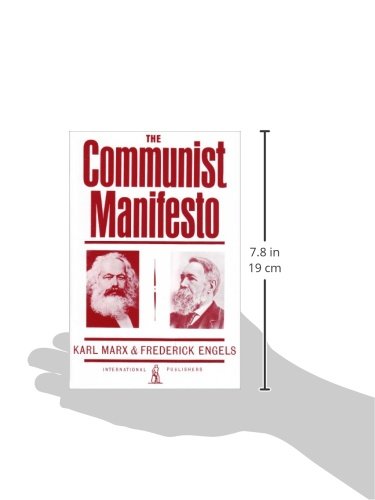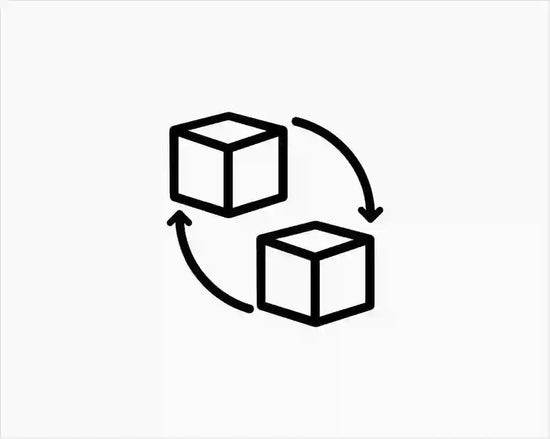Concordia Style Boutique
The Communist Manifesto
The Communist Manifesto
Couldn't load pickup availability
The Communist Manifesto is a political pamphlet written by Karl Marx and Friedrich Engels in 1848. It lays out the core principles of Marxism, including the class struggle, the critique of capitalism, and the call for proletarian revolution.
Key Ideas in The Communist Manifesto
1️⃣ Class Struggle – History is defined by the conflict between oppressors (bourgeoisie) and the oppressed (proletariat).
2️⃣ Critique of Capitalism – Capitalism leads to exploitation and inequality, concentrating wealth and power in the hands of a few.
3️⃣ Revolutionary Call – The working class (proletariat) must rise against the ruling class (bourgeoisie) to abolish private property and create a classless society.
4️⃣ End of the State – Once class divisions disappear, the state will wither away, leading to a communist society based on collective ownership.
Famous Quotes
🟥 "The history of all hitherto existing society is the history of class struggles."
🟥 "Workers of the world, unite! You have nothing to lose but your chains!"
Summary of The Communist Manifesto
The Communist Manifesto is divided into four sections, each outlining different aspects of Marx and Engels’ political philosophy and revolutionary ideas.
1️⃣ Bourgeois and Proletarians
This section explains historical materialism—how history is shaped by class struggles.
🔹 Key Argument:
- Society has always been divided into oppressor and oppressed classes.
- The rise of capitalism replaced feudalism, leading to a new struggle between:
- Bourgeoisie (capitalist class) – Own the means of production and exploit workers.
- Proletariat (working class) – Sell their labor but do not own anything significant.
🔹 Critique of Capitalism:
- Capitalism is unstable and constantly revolutionizes production.
- The bourgeoisie, in pursuit of profit, expands global markets but creates inequality.
- Workers become wage slaves, dependent on capitalists for survival.
🔹 Call for Change:
- The proletariat must unite and overthrow the bourgeoisie.
- This revolution will abolish private property and lead to a classless society.
2️⃣ Proletarians and Communists
This section outlines the role of communists in the working-class movement.
🔹 Who Are the Communists?
- They are the most advanced, organized, and theoretically informed section of the working class.
- Their goal is not to establish a new ruling class but to abolish class distinctions entirely.
🔹 Key Communist Demands:
- Abolition of private property (not personal belongings, but capitalist ownership).
- State control of credit, transportation, and communication.
- Free education and the end of child labor.
- Progressive taxation (wealth redistribution).
- Centralized control over production (for the common good).
3️⃣ Socialist and Communist Literature
This section critiques different socialist movements of the time.
🔹 Types of Socialism Rejected:
- Reactionary Socialism – Romanticizes the past (feudalism).
- Bourgeois Socialism – Seeks to improve capitalism without overthrowing it.
- Utopian Socialism – Idealistic visions without practical plans for revolution.
4️⃣ Position of the Communists in Relation to Other Opposition Parties
This section clarifies Communists' alliances with other revolutionary movements.
🔹 Key Takeaways:
- Communists support all movements fighting against oppression.
- However, their ultimate goal is the abolition of class society and the establishment of communism.
- The manifesto ends with the famous call to action:
"Workers of the world, unite! You have nothing to lose but your chains!"
Relevance Today
🟥 Economic Inequality – The wealth gap continues to widen under capitalism.
🟥 Worker Exploitation – Issues like gig economy labor, automation, and job insecurity reflect Marx’s concerns.
🟥 Globalization – The capitalist system continues to expand markets, just as Marx predicted.
🟥 Class Struggle – Protests and labor movements worldwide echo Marx’s call for worker solidarity.
1️⃣ Influence on Socialist & Communist Movements
- The Communist Manifesto (1848) laid the foundation for socialist and communist ideologies, inspiring movements worldwide.
- The Bolshevik Revolution (1917) in Russia was heavily influenced by Marxist theory, leading to the establishment of the Soviet Union.
- Socialist and communist parties across Europe, Asia, and Latin America adapted its ideas, with varying degrees of success and interpretation.
- The Chinese Communist Revolution (1949) saw Mao Zedong reinterpret Marxism through a rural and peasant-based lens.
2️⃣ Modern Relevance & Impact
- Economic Critique: Marx’s analysis of capitalism—its cycles of crisis, wealth concentration, and worker exploitation—still resonates today, particularly in debates on income inequality and labor rights.
- Globalization & Automation: The growing gig economy, automation, and corporate monopolies echo Marx’s concerns about labor alienation and capitalist expansion.
- Political Discourse: Many leftist movements, from social democrats to democratic socialists, draw from Marx’s ideas while advocating for modern policies like universal healthcare and wealth redistribution.
- Reinterpretation in the 21st Century: Figures like Bernie Sanders, Yanis Varoufakis, and others push for policies aligned with socialist principles, though within democratic frameworks.
Materials
Materials
Shipping & Returns
Shipping & Returns
Dimensions
Dimensions
Care Instructions
Care Instructions


-

Shipping:
-

Exchange/Return Policy + Refunds
-
If you don't have a PayPal account, you can still use Paypal.




